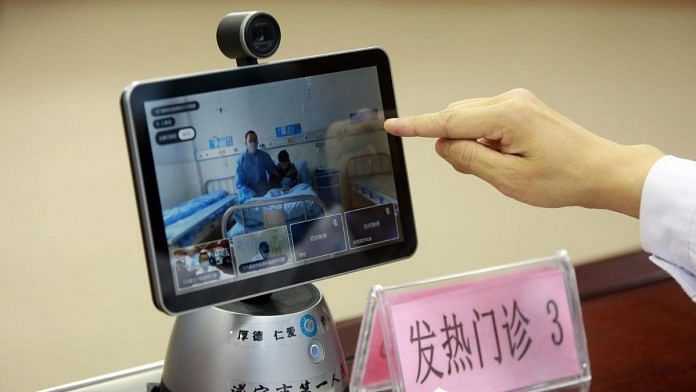Seoul/New Delhi: Overstretched health services and social-distancing measures to combat coronavirus are giving a boost to telemedicine across Asia, a phenomenon likely to continue even after the pandemic has been controlled.
Economies as diverse as South Korea’s — with its world-class technology sector — and India’s, with low health-care costs and a deep pool of doctors, are exploring digital health possibilities at a time when patients may hesitate to visit clinics for fear of catching the virus.
The potential is tremendous: Asia-Pacific’s telemedicine market is expected to grow from $8.5 billion this year to $22.5 billion by 2025, according to a report from Market Data Forecast. While it’s mostly a domestic phenomenon for now — regulations in many countries make it difficult to consult a doctor abroad — growing acceptance of remote consultations is improving the availability of health care for underserved communities across Asia.
“The benefits to the patient are threefold: better access, cost and outcomes,” said Vikram Kapur, a partner at Bain & Co. in Singapore and head of the firm’s health-care practice in Asia-Pacific. “A telemedicine-enabled system can better triage and steer care through the journey than a disjointed health-care ecosystem.”
In Japan, inquiries about online care have increased 15-fold since the pandemic began, Nikkei reported in May. MyDoc, a telemedicine platform headquartered in Singapore, saw active daily users rise by 60% in February and then double in March, according to a Bain report, while digital-health platforms in Indonesia and Australia also have seen activity surge.
Already on the rise even before Covid, telemedicine use has dramatically accelerated as social distancing became the new norm. Daily use metrics on telemedicine platforms showed year-on-year growth of more than 150% in the first quarter, Kapur said.
“The key element of this impact is the potential to add new patients to the health-care economy,” said Rafay Ishfaq, who teaches supply chain management at Auburn University’s Harbert College of Business. “Extended economic benefits are derived by infrastructure and technology investments in the public sector.”
While telemedicine is still banned in South Korea — critics cite the potential for data breaches and misdiagnoses — the country was conducting pilot programs even before the pandemic for groups with limited health-care access, such as island residents and frontline soldiers. The government temporarily approved online consultations for ordinary patients at the height of the country’s virus outbreak in February.
With a burgeoning biotechnology industry led by Samsung Biologics Co., Celltrion Inc. and Seegene Inc., telemedicine fits South Korea’s push toward an “untact” economy involving less direct human interaction.
Replacing Medical Tourism
Telemedicine can be a boon for countries like India, where a medical tourism industry that had been expected to reach $9 billion this year has ground to a halt. With hospital services now mostly devoted to Covid-19, telemedicine is helping many Indians access health care and sustain a sector that contributes 10% of gross domestic product.
Dhruv Kumar, chief executive officer of Tamil Nadu-based iCliniq: The Virtual Hospital, which facilitates virtual care with a network of 3,500 doctors, said online consultations are up four-fold from a year ago. Patients are drawn mainly from the Persian Gulf, Europe and the U.S., where medical costs are much higher than in India.
Countries with relatively poor access to health care, such as Indonesia, could find particular value in telemedicine, Bain’s Kapur said. So could countries whose digital ecosystems are more mature: Data from China suggest telemedicine usage has remained elevated even as physical clinics reopen, he said.
“The pandemic has been an opportunity for us, albeit a sad one,” said Kim Joon-yun, chief executive officer of Invites Healthcare Co., a South Korean firm working to link doctors and patients digitally. “It made us feel homes are our last line of defense and our venue of care. If somebody has to deliver that care, going digital will ensure the connectivity stays alive.” –Bloomberg
Also read: Not just for flu but even BP and gynaecology — how telemedicine is filling a Covid vacuum




The healthcare industry has always been the backbone of society. Delivering healthcare services to everyone is becoming a challenge in this fast and busy world. visit our platform vidmed.co.in , Vidmed App helps the patient to get a diagnosis from the comfort of his home.
Thanks for sharing.